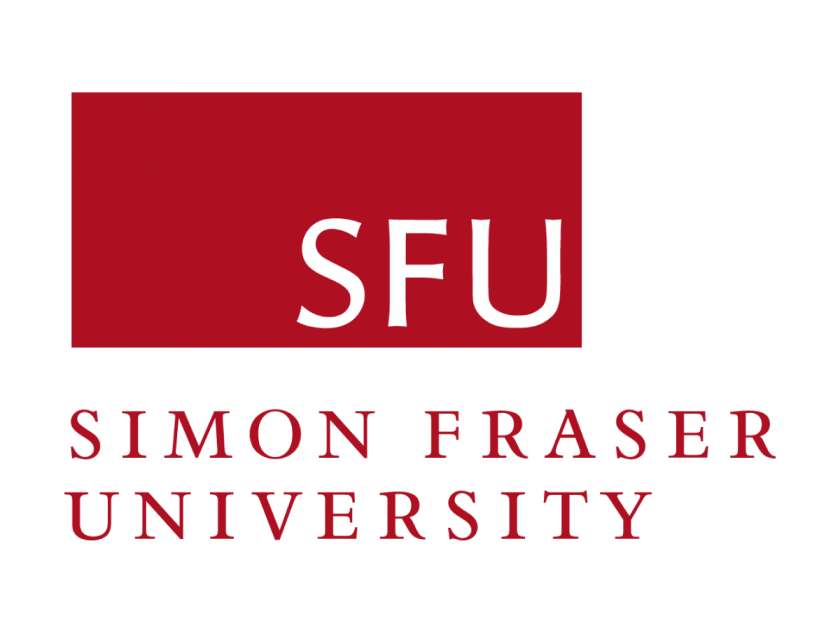Teaching English Sounds to Vietnamese Secondary School Students: From Theories to Applications Using Learner-centered Methods
DOI:
https://doi.org/10.54855/ijli.23212Keywords:
second language acquisition, teaching pronunciation, secondary school, theories, activitiesAbstract
Pronunciation plays a pivotal role in language teaching for communicative purposes. Practitioners, however, are either ignorant or reluctant to teach pronunciation due to insufficient professional training, time restrictions, large classrooms, and excessive language knowledge. This research was conducted to fill this gap. The author carefully synthesized theories of language and second language (L2) learning to design a series of activities for teaching English pronunciation to Vietnamese secondary school students with the use of learner-centered methods. Sixteen pronunciation lessons on sounds from English 6 i-Learn Smart World (Vo et al., 2021) and English 7 i-Learn Smart World (Vo et al., 2022) were examined. The findings recommended some activities which were based on the pronunciation acquisition of meaning, form, and use and followed the Pre-While-Post teaching procedure. The pedagogical issues mentioned will be resolved in similar educational settings when this effort succeeds in developing a basic theory-based procedure to teach English sounds.
References
Bill, V., & Jessica, W. (2015). Early Theories in SLA. In Bill, V., & Jessica, W. (Eds.), Theories in Second Language Acquisition (pp. 17-33). Routledge.
Celce-Murcia, M, D Brinton., & Goodwin. J. (1996). Teaching pronunciation: A reference for teachers of English to speakers of other languages. Cambridge: Cambridge: University Press.
Chomsky, N. (1965). Aspects of the Theory of Syntax. Cambridge, Massachusetts: The MIT Press.
DeKeyser, R. (2003). Implicit and explicit learning. In Doughty, C. J., and Long, M. (Eds.), The Handbook of Second Language Acquisition (pp. 313–348). Oxford: Blackwell.
DeKeyser, R. (2007). Practice in a Second Language. New York: Cambridge University Press.
DeKeyser, R. M. (2015). Skill acquisition theory. In B. VanPatten & J. Williams (Eds), Theories in second language acquisition: An introduction (2nd edition) (pp. 94–112). New York, NY: Routledge.
Diane, L., & Jeanette, D. (2010). Grammar. In Norbert, S. (Eds.), Introduction to Applied Linguistics (pp. 18-33). Hodder Education.
Donato, R. (1994). Collective scaffolding in second language learning. In Lantolf, J., Appel, G. (Eds.), Vygotskian Approaches to Second Language Research. Norwood, NJ: Ablex Publishing Corporation.
Doughty, C., Williams, J. (1998). Pedagogical choices in focus on form. In: Doughty, C., & Williams, J. (Eds.), Focus on Form in Classroom Second Language Acquisition (pp. 197–285). Cambridge: Cambridge University Press.
Ellis, R. (2003). Task-Based Language Learning and Teaching. Oxford: Oxford University Press.
Ellis, R., & Shintani, N. (2014). Exploring Language Pedagogy through Second Language Acquisition Research. London: Routledge.
Fotos, S., Ellis, R. (1991). Communicating about grammar: a task-based approach. TESOL Quarterly, 25, 605–628.
Hismanoglu, M., & Hismanoglu, S. (2010). Language teachers' preferences of pronunciation teaching techniques: traditional or modern?. Procedia-Social and Behavioral Sciences, 2(2), 983-989. https://doi.org/10.1016/j.sbspro.2010.03.138
Hymes, D. H. (1972). On Communicative Competence. In Pride, J. B. and Holms, J. (Eds.), Sociolinguistics (pp. 269-293). Harmondsworth: Penguin. Retrieved 2nd October, 2022 from http://wwwhomes.uni-bielefeld.de/sgramley/Hymes-1.pdf
Kumaravadivelu, B. (2008). Understanding language teaching: From Method to postmethod. Mahwah, NJ: Lawrence Erlbaum Associates.
Macdonald, S. (2002). Pronunciation - views and practices of reluctant teachers. Prospect: An Australian Journal of TESOL, 17(3), pp. 3-18.
Martyn, H., & Julia, S. K. (2021). Achievers Grade 6. Hue University Publishing House.
Martyn, H., & Julia, S. K. (2021). Achievers Grade 7. Hue University Publishing House.
McCarthy, M. (2001). Issues in applied linguistics. Cambridge, UK: Cambridge University Press.
Ministry of Education and Training (MOET). (2018). Chương trình giáo dục phổ thông - Chương trình môn tiếng Anh [General education curriculum - English curriculum]. Retrieved 2nd October, 2022, from http://tieuhocauco.pgdrachgia.edu.vn/upload/18281/fck/files/Chuong-trinh-giao-duc-pho-thong-mon-tieng-anh.pdf
Moon, J. (2008). Primary Innovation Module. London: British Council.
Morley, J. (1991). The pronunciation component in teaching English to speakers of other languages. TESOL Quarterly, 25(3), 481-520. http://dx.doi.org/10.2307/3586981
Morley, J. (Eds.). (1994). Pronunciation, pedagogy and theory: New views, new directions. Alexandria, Virginia: TESOL Inc.
Murphy, J. M. & Baker, A. A. (2015). History of ESL pronunciation teaching. In M. Reed & J. M. Levis (Eds.), The Handbook of English Pronunciation (pp. 36-65). United Kingdom: Wiley-Blackwell. https://doi.org/10.1002/9781118346952.ch23
Nina, S., & Patsy, M. L. (2010). Second Language Acquisition. In Norbert, S. (Eds.), Introduction to Applied Linguistics (pp. 108-123). Hodder Education.
Ngo, T. H. T. (2022). Using Apology Strategies in Letters by EFL Students at University of Foreign Language Studies – The University of Danang. International Journal of Language Instruction, 1(2), 1–12. https://doi.org/10.54855/ijli.22121
Nguyen, H. M. P. (2022). Using Scaffolding to Improve Online Group Presentation in English Literature Classes: An Action Study at Van Lang University. International Journal of TESOL & Education, 2(4), 21–31. https://doi.org/10.54855/ijte.22242
Nguyen, L. T., & Newton, J. (2020). Pronunciation Teaching in Tertiary EFL Classes: Vietnamese Teachers' Beliefs and Practices. TESL-EJ, 24(1), n1. Retrieved from https://files.eric.ed.gov/fulltext/EJ1257227.pdf
Pennington, M. C. (1996) Phonology in English Language Teaching: An International Approach. Longman, London.
Penny, U. (2012). A Course in English Language Teaching. Cambridge University Press.
Richards, J. C., & Rodgers, T. S. (2001). Approaches and methods in language teaching (2nd edition). Cambridge, UK: Cambridge University Press.
Robinson, P. (2001). Task complexity, task difficulty, and task production: Exploring interactions in a componential framework. Applied Linguistics, 22(1), 27–57.
Sharwood Smith, M. (1993). Input enhancement in instructed SLA. Theoretical bases. Studies in Second Language Acquisition, 15, 165–179.
Schmidt, R. (2001). Attention. In Robinson, P. (Eds), Cognition and Second Language Instruction (pp. 3–32). Cambridge: Cambridge University Press.
Swain, M., & Lapkin, S. (1998). Interaction and second language learning: two adolescent French immersion students working together. The Modern Language Journal, 82, 320–337.
Swain, M., & Lapkin, S. (2001). Focus on form through collaborative dialogue: Exploring task effects. In Bygate, M., Skehan, P., & Swain, M. (Eds.), Researching Pedagogic Tasks: Second Language Learning, Teaching and Testing (pp. 99–118). New York: Longman.
Tran, C. T., & Le, Q. T. (2022). What is it like learning with an enthusiastic teacher? – A survey on university EFL students. International Journal of TESOL & Education, 2(4), 134–148. https://doi.org/10.54855/ijte.22248
Tran, D. P. T., & Nguyen, H. B. (2020). EFL Teachers' Beliefs and Practices of Teaching Pronunciation in a Vietnamese Setting. Universal Journal of Educational Research, 8(12), 7022-7035. DOI: 10.13189/ujer.2020.081270
Tung, N. T. (2020a). A learning-centred approach to teaching linguistic knowledge: Teachers' perception of teaching periods 1 and 2 (/3) in the new English curriculum for secondary schools in Vietnam. Ho Chi Minh City Open University Journal of Science-Social Sciences, 10(2), 11-25. https://doi.org/10.46223/HCMCOUJS.soci.en.10.2.1342.2020
Tung, N. T. (2020b). A case study of curriculum development: Backward or forward/central design?. Ho Chi Minh City Open University Journal of Science-Social Sciences, 10(1), 18-28. https://doi.org/10.46223/HCMCOUJS.soci.en.10.1.546.2020
Van Compernolle, R. A. (2014). Sociocultural theory and L2 instructional pragmatics. Bristol: Multilingual Matters.
Van Patten, B. (2006). Input Processing and Grammar Instruction in Second Language Acquisition. Norwood, NJ: Ablex Publishing Corporation.
Vo, D. P. et al. (2021). English 6 i-Learn Smart World. DTP Education Solutions
Vo, D. P. et al. (2022). English 7 i-Learn Smart World. DTP Education Solutions
Downloads
Published
Issue
Section
License
Copyright (c) 2023 Nguyen Hong Nhung

This work is licensed under a Creative Commons Attribution 4.0 International License.
The copyright of all articles published in the International Journal of Language Instruction (ijli) remains with the Authors, i.e. Authors retain full ownership of their article. Permitted third-party reuse of the open access articles is defined by the applicable Creative Commons (CC) end-user license which is accepted by the Authors upon submission of their paper. All articles in the ijli are published under the CC BY-NC 4.0 license, meaning that end users can freely share an article (i.e. copy and redistribute the material in any medium or format) and adapt it (i.e. remix, transform and build upon the material) on the condition that proper attribution is given (i.e. appropriate credit, a link to the applicable license and an indication if any changes were made; all in such a way that does not suggest that the licensor endorses the user or the use) and the material is only used for non-commercial purposes.
Authors are able to enter into separate, additional contractual arrangements for the non-exclusive distribution of the journal's published version of the work (e.g., post it to an institutional repository, in a journal or publish it in a book), with an acknowledgment of its initial publication in this journal.











